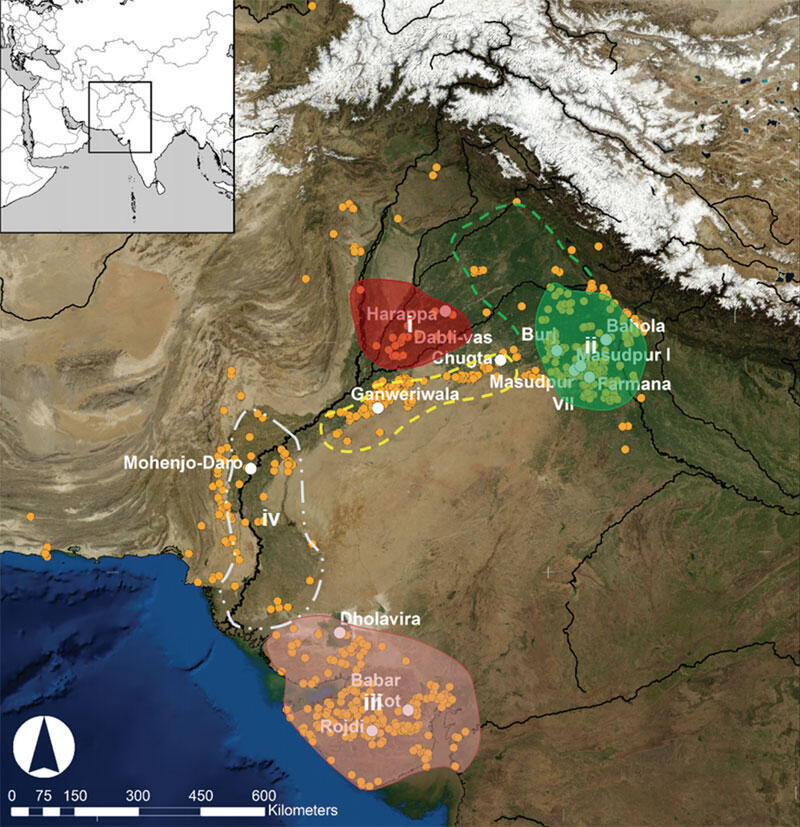"The recognition of variation and diversity [in the ancient Indus civilization] has encouraged a gradual, though not universally accepted, shift toward the interpretation that certain categories of Indus material acted as ‘a veneer… overlying diverse local and regional cultural expressions'," write the authors of this article (p. 453-4). It is this concept of a "veneer" that is at play here; how do we interpret the apparent uniformity of certain ancient Indus cultural practices, while also acknowledging the growing number of regional differences that are becoming apparent as excavation techniques and source sites and materials grow? How do we understand that "it is likely that many components of this material and cultural veneer were predominately produced in urban centres or in smaller ‘factory’ sites near the sources of raw material, particularly objects like beads and shell bangles, but also seals and weights," in such places as Chanhu-daro (Sindh) and Ghola Dhoro/Bagasra (Gujarat) but not in other places?
These are complex issues, and the authors do a fine job of isolating the environmental, agricultural, ceramic production, stylistic, and seal vs. sealing issues that help cast light on how we think of the the "veneer" issue. They write that "the presence of a cultural veneer nonetheless suggests the existence of a rich socio-economic network in which settlements of all sizes were connected in multiscale interactive relationships of differing intensity, with particular groups and populations potentially playing different roles as producers and consumers," and it is what we can decode and surmise about findings to date (many of them recent) that make this paper a valuable thought piece and contribution to categorizing and recognizing how to approach this issue.
Image: Suggested zonation of distinct approaches to cropping, with areas that are at least partially supported by archaeobotanical data being shown with solid outlines and shading, and areas that lack archaeobotanical data shown with dashed lines: i) area where sequential multi-cropping is possible but mono-cropped winter cereals predominated; ii) area where summer and winter crops grown flexibly; iii) area where summer crops predominated; and iv) area where winter crops predominated (after Petrie and Bates 2017: fig. 6).

